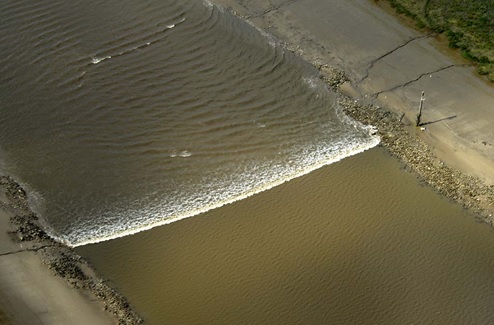Bore Tide:
Bores occur in relatively few locations worldwide, usually in areas with a large tidal range (typically more than 6 metres (20 ft) between high and low water), and where incoming tides are funneled into a shallow, narrowing river via a broad bay. The funnel-like shape not only increases the tidal range, but it can also decrease the duration of the flood tide, down to a point where the flood appears as a sudden increase in the water level. Note the tidal bore takes place during the flood tide and never during the ebb tide.
As a progressive wave enters shallow water its speed is decreased. Since the trough is shallower than the crest its retardation is greater, resulting in a steepening of the wave front. Therefore in many rivers, the duration of rise is considerably less than the duration of fall. In few estuaries, the advance of the low water trough is so much retarded that the crest of the rising tide overtakes the low, and advances upstream as a churning, foaming wall of water called a bore tide. The bore tides can be dangerous as the ship along side berth may suddenly surge and break the mooring lines. The tide tables indicate where bores occur.
Example of bore tide are:


Leave a Comment